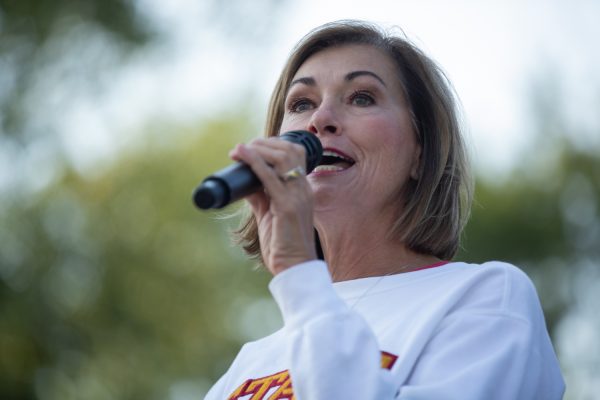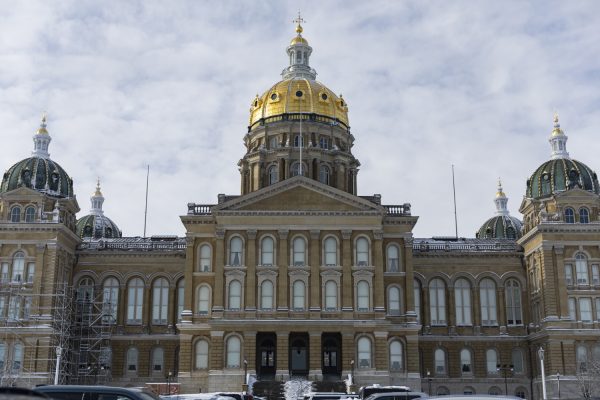Rosario: New report on Iowa privatized Medicaid raises fiscal questions
While Medicaid was privatized with the intention of saving money, the result has been care reduction and drastic changes in savings.
Dr. Traci Acklin, a pediatrician in Montgomery, W.V., peers into Connor Prather’s ear. The one-year-old boy, who has Medicaid coverage, has had persistent ear infections, which will require surgery. (Noam N. Levey/Los Angeles Times/TNS)
September 17, 2018
In 2016, former Gov. Terry Branstad privatized Iowa’s Medicaid program in an effort to save money. With full support from current Gov. Kim Reynolds, the program serving 680,000 poor and disabled Iowans remains controversial, with complaints of care reduction and denials. And the cost per Medicaid member is rising, according to the Iowa Department of Human Services’ draft budget.
The document states that the cost per Medicaid member was decreasing from fiscal 2015 to 2017. Last fiscal year, it increased by 6.6 percent, and then another 11 percent in the current fiscal year, 2019.
This increase is due to higher rates being paid to the program’s managed-care organizations, according to the document. In August, the companies were granted a 7.5 percent increase that included $103 million from the state budget.
Despite this, Iowa Medicaid Director Mike Randol maintains that the privatized system is saving the state money and that the data must be looked at in context. But with per-member costs spiking and enrollment growing, what could this context be?
RELATED: Dueling views on Medicaid shape race for Iowa governor
In an email to The Daily Iowan, Human Services Department spokesman Matt Highland said the chart “may have caused confusion because it does not account for the period in which an obligation is incurred.”
“The increases in the per-member cost based on obligation chart are significantly lower than those experienced in the health-care system as a whole,” Highland said.
The data that Highland sent state that the cost per member based on obligation increased 1.4 percent last fiscal year and 5.6 percent this fiscal year, as opposed to 6.6 percent and 11 percent, respectively.
So, this is all a long-winded way of saying that even if you pull out more flattering statistics, they’ll still show a rise in costs.
The confusion surrounding Iowa’s privatized Medicaid savings is nothing new. In 2016, Branstad predicted that privatization would accrue $232 million in state savings. Last December, Human Services’ state savings estimate plummeted to $47 million. Then in May, the agency changed this estimate to $140.9 million.
RELATED: Candidates for Iowa Legislature talk privatization, worker rights, education
Now that a recent report shows the per-member cost is rising, the state is somehow still saving money, apparently, in some context that remains unclear.
Iowa’s Medicaid system has emerged as a major issue for the November election. If elected, Democratic gubernatorial candidate Fred Hubbell plans to bring Medicaid back under state control.
Republican Gov. Reynolds disagrees.
“[Hubbell] wants to go back to a broken, unsustainable system that could not guarantee long-term health care for vulnerable Iowans,” Pat Garrett, Reynolds’ campaign spokesperson, previously said in an email to the DI.
A report from the Iowa Office of Ombudsman said it received more than 225 complaints in 2017 regarding the private companies that run Iowa’s Medicaid, more than double the 85 complaints lodged in 2016. Medicaid recipients have been denied such medical devices as wheelchairs and shower stools. Forty-seven percent of Iowans say the state should drop the privately managed system, according to a Des Moines Register/Mediacom Iowa Poll.
Iowa Republicans may argue that the state-run system was unsustainable, but with privatization failing recipients and racking up costs, privatization can hardly be called a fiscal success.

















